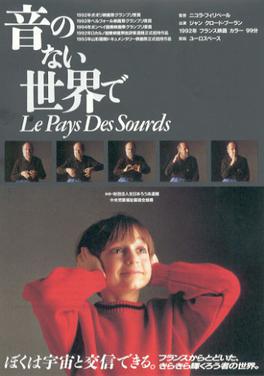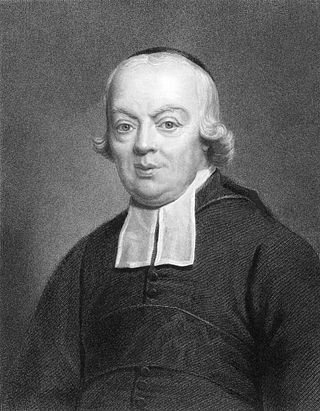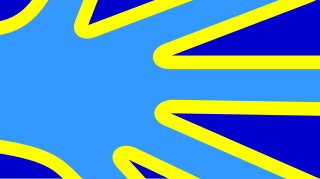
Deafblindness is the condition of little or no useful hearing and little or no useful sight. Different degrees of vision loss and auditory loss occur within each individual. Because of this inherent diversity, each deafblind individual's needs regarding lifestyle, communication, education, and work need to be addressed based on their degree of dual-modality deprivation, to improve their ability to live independently. In 1994, an estimated 35,000–40,000 United States residents were medically deafblind. Helen Keller was a well-known example of a deafblind individual. To further her lifelong mission to help the deafblind community to expand its horizons and gain opportunities, the Helen Keller National Center for Deaf-Blind Youths and Adults, with a residential training program in Sands Point, New York, was established in 1967 by an act of Congress.

Louis Laurent Marie Clerc was a French teacher called "The Apostle of the Deaf in America" and was regarded as the most renowned deaf person in American Deaf History. He was taught by Abbé Sicard and deaf educator Jean Massieu, at the Institution Nationale des Sourds-Muets in Paris. With Thomas Hopkins Gallaudet, he co-founded the first school for the deaf in North America, the Asylum for the Education and Instruction of the Deaf and Dumb, on April 15, 1817, in the old Bennet's City Hotel, Hartford, Connecticut. The school was subsequently renamed the American School for the Deaf and in 1821 moved to 139 Main Street, West Hartford. The school remains the oldest existing school for the deaf in North America.
Tactile signing is a common means of communication used by people with deafblindness. It is based on a sign language or another system of manual communication.
In the United States, deaf culture was born in Connecticut in 1817 at the American School for the Deaf, when a deaf teacher from France, Laurent Clerc, was recruited by Thomas Gallaudet to help found the new institution. Under the guidance and instruction of Clerc in language and ways of living, deaf American students began to evolve their own strategies for communication and for living, which became the kernel for the development of American Deaf culture.

In the Land of the Deaf is a French documentary created and produced by Nicolas Philibert in 1992. The film is presented French Sign Language (FSL) and French, with English subtitles and closed captions. Philibert uses sparse dialogue in creating an unsentimental, non-manipulative work which allows its subjects to communicate their feelings about the richness of life despite hearing problems.
The Centre for Deaf Studies was a department of the University of Bristol, England, in the field of deaf studies, which it defines as the study of the "language, community and culture of Deaf people". Established in 1978, the Centre claimed to be the first higher educational Institute in Europe "to concentrate solely on research and education that aims to benefit the Deaf community". The centre was at the forefront in establishing the disciplines of deaf studies and deafhood. It used British Sign Language (BSL), had a policy of bilingual communication in BSL and English, and employed a majority of deaf teaching staff.

Charles-Michel de l'Épée was a philanthropic educator of 18th-century France who has become known as the "Father of the Deaf".
The Section des Sourds et Malentendants Socialistes : Organization of Socialist Deaf and Hard of Hearing People (SSMS) is a French political organization. This is an organization of French policy of all activists, deaf supporters, all those who want to build a different future at the left. It is an organization of reflection and proposals on socialism, on the issues of deafness and disability.
Raphaël Bouton, is a French politician, who was born deaf. He is the first deaf president of deaf and hard of hearing socialists. He is founder of the section deaf and hard of hearing socialists created 19 June 2010.
Deafness has varying definitions in cultural and medical contexts. In medical contexts, the meaning of deafness is hearing loss that precludes a person from understanding spoken language, an audiological condition. In this context it is written with a lower case d. It later came to be used in a cultural context to refer to those who primarily communicate through sign language regardless of hearing ability, often capitalized as Deaf and referred to as "big D Deaf" in speech and sign. The two definitions overlap but are not identical, as hearing loss includes cases that are not severe enough to impact spoken language comprehension, while cultural Deafness includes hearing people who use sign language, such as children of deaf adults.

La Famille Bélier is a 2014 French-Belgian coming-of-age comedy-drama film directed by Éric Lartigau. The film received six nominations at the 40th César Awards, winning Most Promising Actress for Louane Emera. It won a Magritte Award in the category of Best Foreign Film.
Betty Gloria Miller, also known as Bettigee was an American artist who became known as the "Mother of De'VIA".

Na Laga'at is a nonprofit organization founded in 2002 by Adina Tal and Eran Gur around the first of its kind in the world ensemble whose actors are all deafblind. The organization established a unique cultural center at the Levantbondet House in the Port of Jaffa in Tel Aviv. The center is a platform for creative arts, which promote equal and open dialogue and lead to social change built on the belief in the human spirit and its ability to reach out and make a change.

Pierre Pélissier was a pioneer for deaf education in France in the mid-19th century. He was born September 22, 1814, in Gourdon, Lot, and died April 30, 1863. He was a teacher of the deaf and also wrote a dictionary for an early form of French Sign Language in 1856. He studied first at Rodez and Toulouse, under Abbot Chazottes. He then became a teacher at the School of the Deaf in Toulouse. He was the deputy secretary of the Central Society for Deaf Mutes in Paris in 1842. At 29, in 1843, he went to Paris to teach at the Imperial School for Deaf Mutes, until his death.
Deaf View/Image Art, abbreviated as De'VIA, is a genre of visual art that intentionally represents the Deaf experience and Deaf culture. Although De'VIA works have been created throughout history, the term was first defined and recognized as an art genre in 1989. In 1989, a group of nine Deaf artists gathered at Gallaudet University shortly before the Deaf Way arts festival was being held there. Led by Betty G. Miller, known as the Mother of De'VIA, and Paul Johnston, these artists created a manifesto detailing what De'VIA is and what it includes. Since its official designation as a genre, De'VIA has helped to introduce the Deaf experience to the artistic world and give a new platform to the Deaf community.

Yvonne Pitrois was a French writer. She wrote a variety of popular books, including multiple biographies of historical figures. Deaf from childhood, Pitrois advocated for the welfare of deaf and deafblind people in her work, including the founding of two magazines featuring advice and inspirational stories about deaf people. She was awarded the Montyon Prize in 1929 for her lifelong efforts in support of the deaf and deafblind community.
Deafness in France is a topic that is relevant to individuality, education, and community. France has a long-running history of involvement with DHH individuals, especially during World War II. There were reportedly about 10,000,000 hearing impaired people in France as of 2014, of whom about 360,000 had "very serious or total" functional limitations, meaning unable to hear a conversation with multiple people and identifying as deaf or hard of hearing. While FSL is the main signed language in France, ASL is studied and used commonly, and French Cued Speech, a mixture of spoken French and FSL, is also not uncommon.
Protactile is a language used by deafblind people using tactile channels. Unlike other sign languages, which are heavily reliant on visual information, protactile is oriented towards touch and is practiced on the body. Protactile communication originated out of communications by DeafBlind people in Seattle in 2007 and incorporates signs from American Sign Language. Protactile is an emerging system of communication in the United States, with users relying on shared principles such as contact space, tactile imagery, and reciprocity.
The Museum of Deaf History, Arts and Culture is a museum dedicated to the unique culture of Deaf and hard of hearing people in the United States. The museum opened in 2001 in Olathe, Kansas, across the street from the Kansas School for the Deaf.

The Deaf flag is a flag that symbolises the Deaf community, and is used as a form of visibility for a socio-cultural minority that is often discriminated against in various areas.









